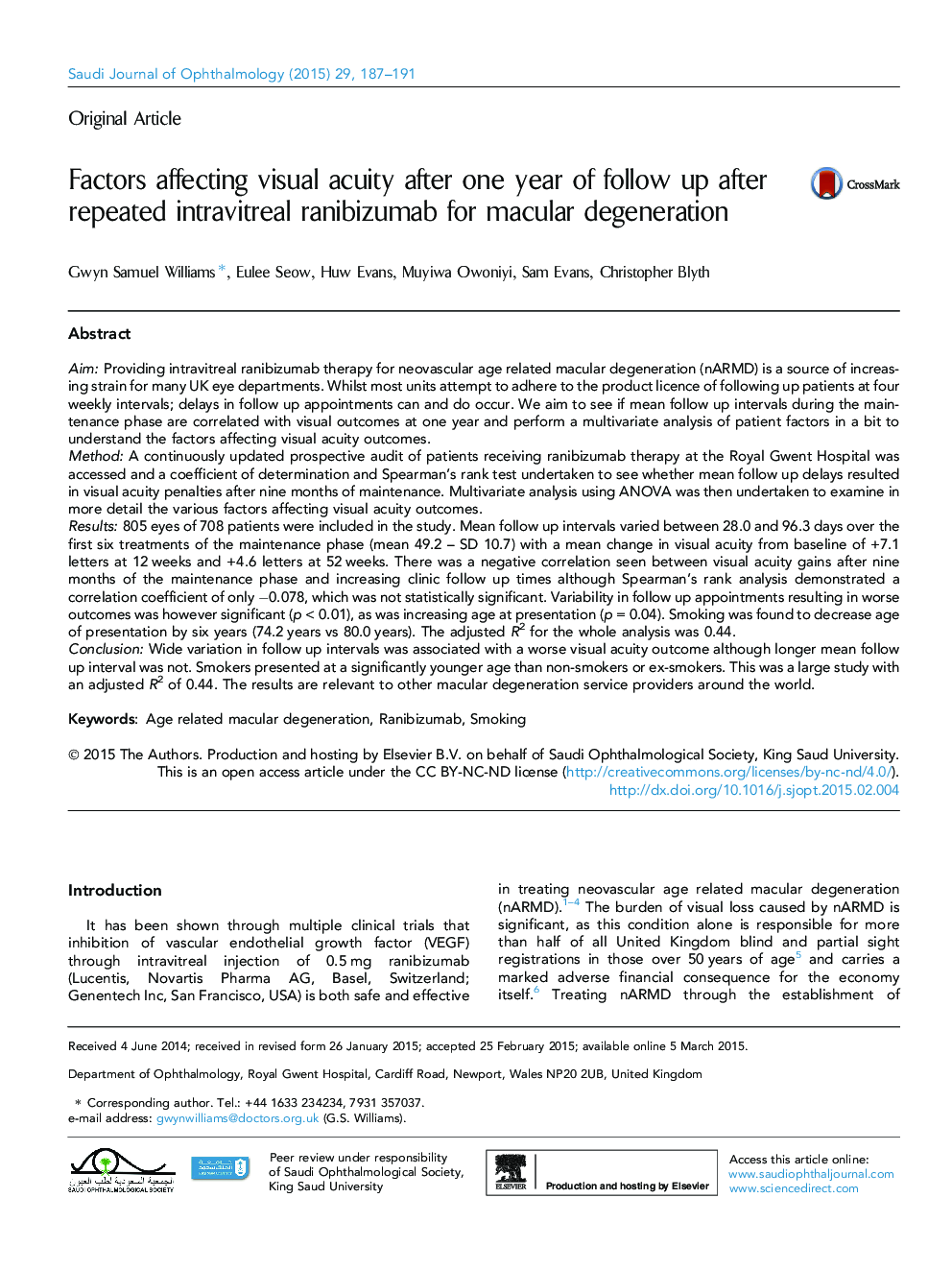| Article ID | Journal | Published Year | Pages | File Type |
|---|---|---|---|---|
| 2703828 | Saudi Journal of Ophthalmology | 2015 | 5 Pages |
AimProviding intravitreal ranibizumab therapy for neovascular age related macular degeneration (nARMD) is a source of increasing strain for many UK eye departments. Whilst most units attempt to adhere to the product licence of following up patients at four weekly intervals; delays in follow up appointments can and do occur. We aim to see if mean follow up intervals during the maintenance phase are correlated with visual outcomes at one year and perform a multivariate analysis of patient factors in a bit to understand the factors affecting visual acuity outcomes.MethodA continuously updated prospective audit of patients receiving ranibizumab therapy at the Royal Gwent Hospital was accessed and a coefficient of determination and Spearman’s rank test undertaken to see whether mean follow up delays resulted in visual acuity penalties after nine months of maintenance. Multivariate analysis using ANOVA was then undertaken to examine in more detail the various factors affecting visual acuity outcomes.Results805 eyes of 708 patients were included in the study. Mean follow up intervals varied between 28.0 and 96.3 days over the first six treatments of the maintenance phase (mean 49.2 – SD 10.7) with a mean change in visual acuity from baseline of +7.1 letters at 12 weeks and +4.6 letters at 52 weeks. There was a negative correlation seen between visual acuity gains after nine months of the maintenance phase and increasing clinic follow up times although Spearman’s rank analysis demonstrated a correlation coefficient of only −0.078, which was not statistically significant. Variability in follow up appointments resulting in worse outcomes was however significant (p < 0.01), as was increasing age at presentation (p = 0.04). Smoking was found to decrease age of presentation by six years (74.2 years vs 80.0 years). The adjusted R2 for the whole analysis was 0.44.ConclusionWide variation in follow up intervals was associated with a worse visual acuity outcome although longer mean follow up interval was not. Smokers presented at a significantly younger age than non-smokers or ex-smokers. This was a large study with an adjusted R2 of 0.44. The results are relevant to other macular degeneration service providers around the world.
